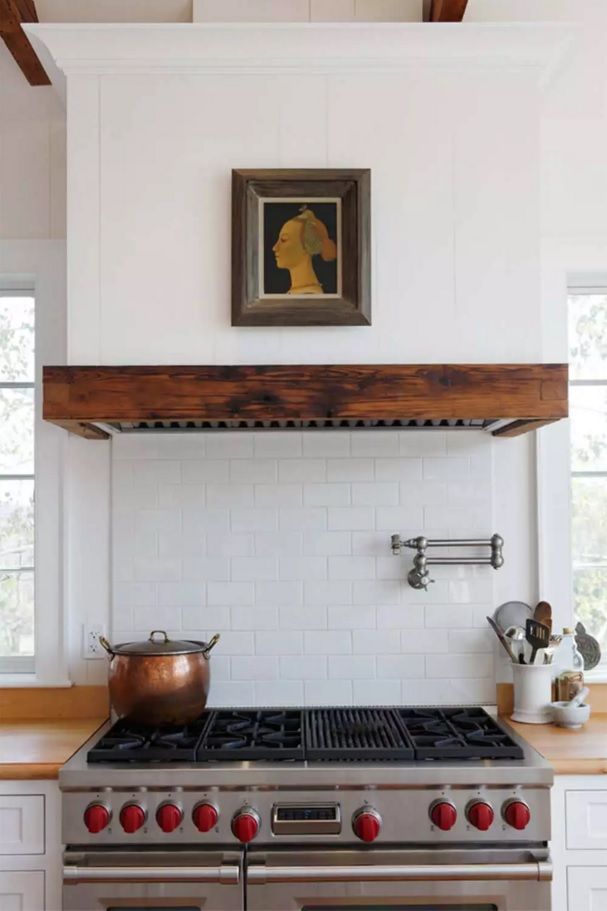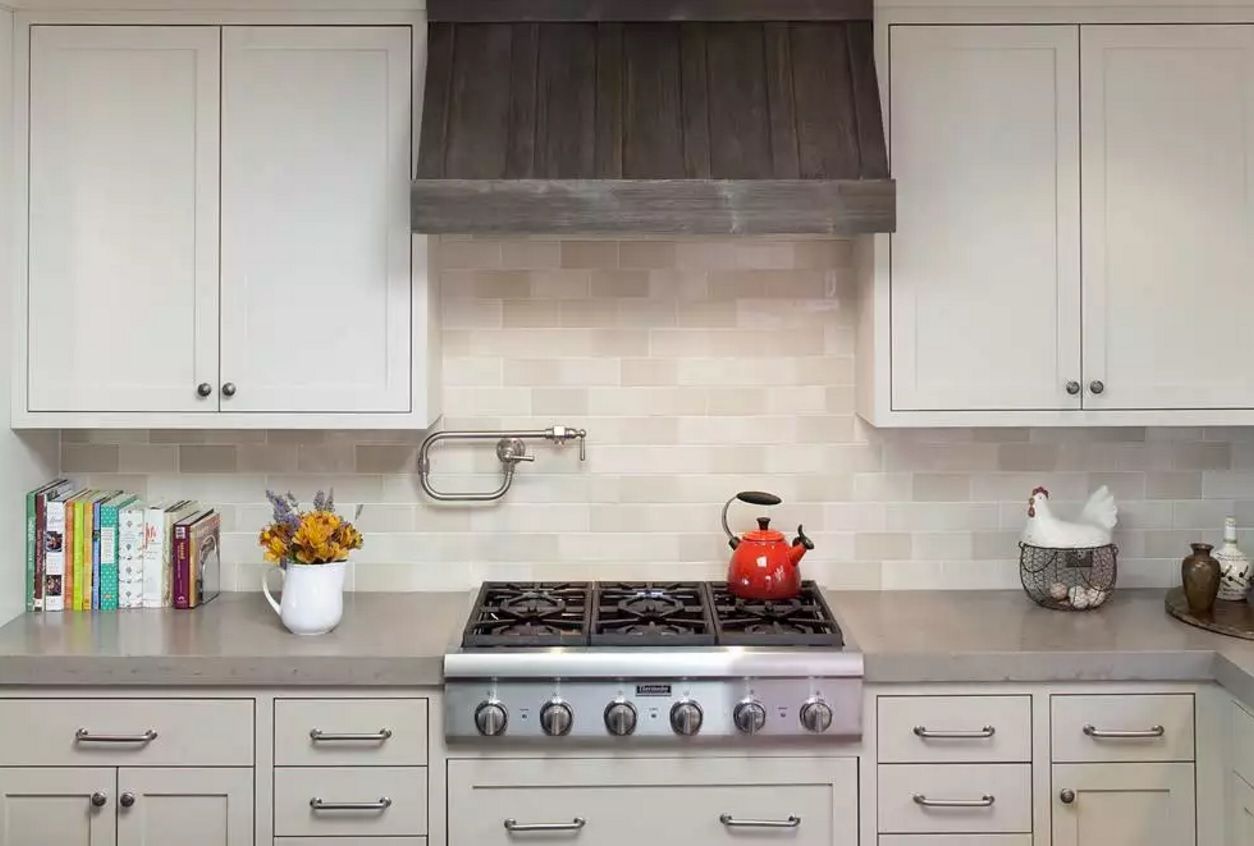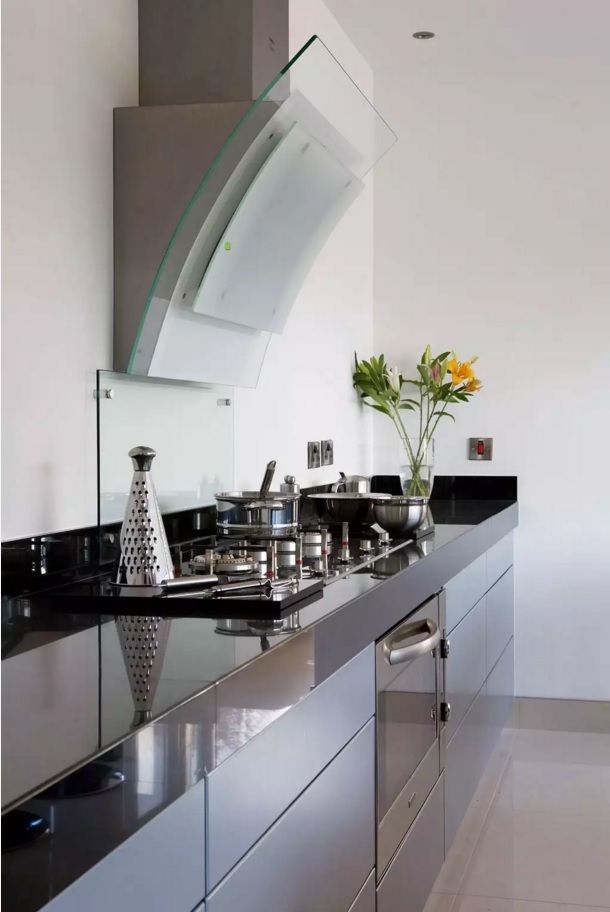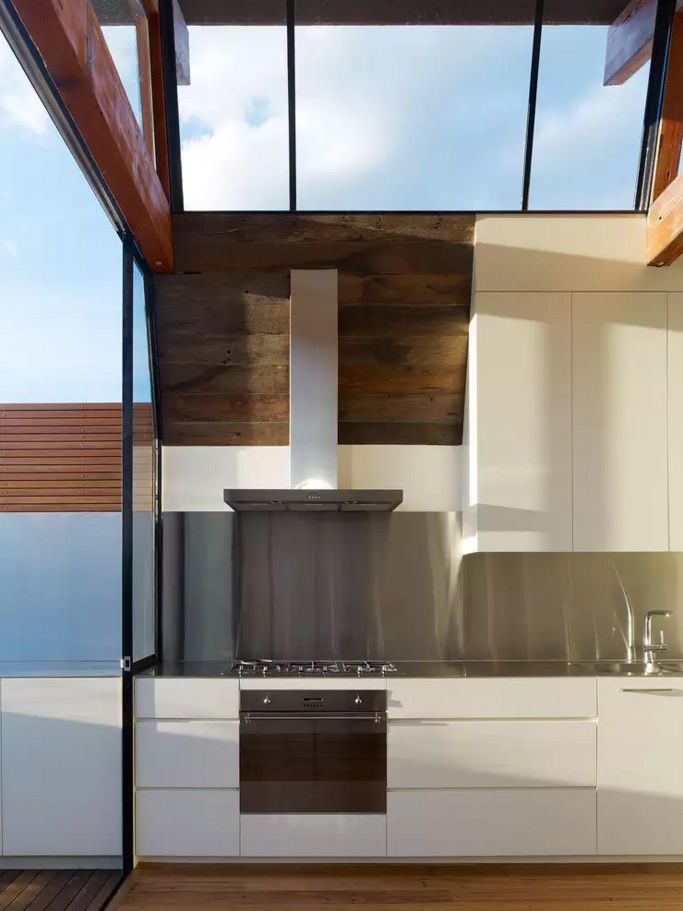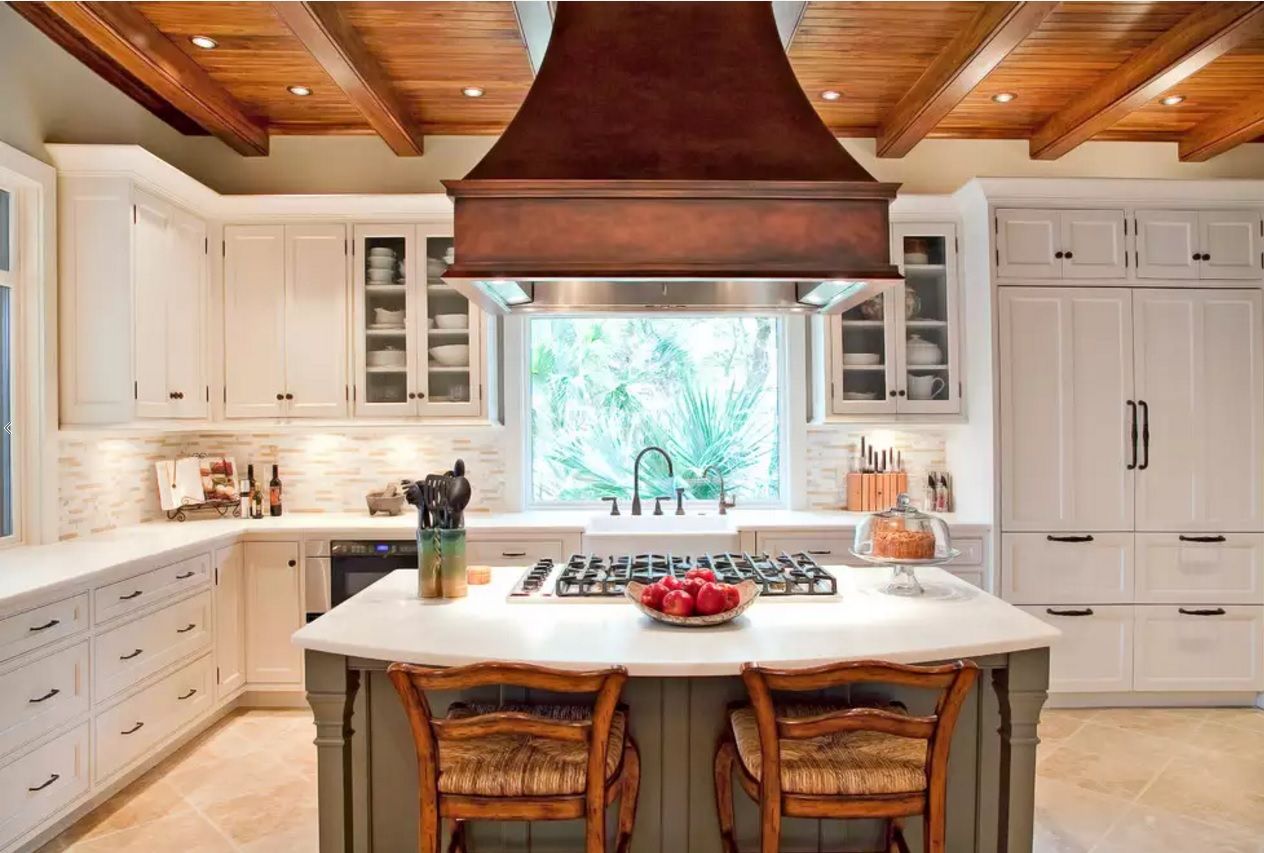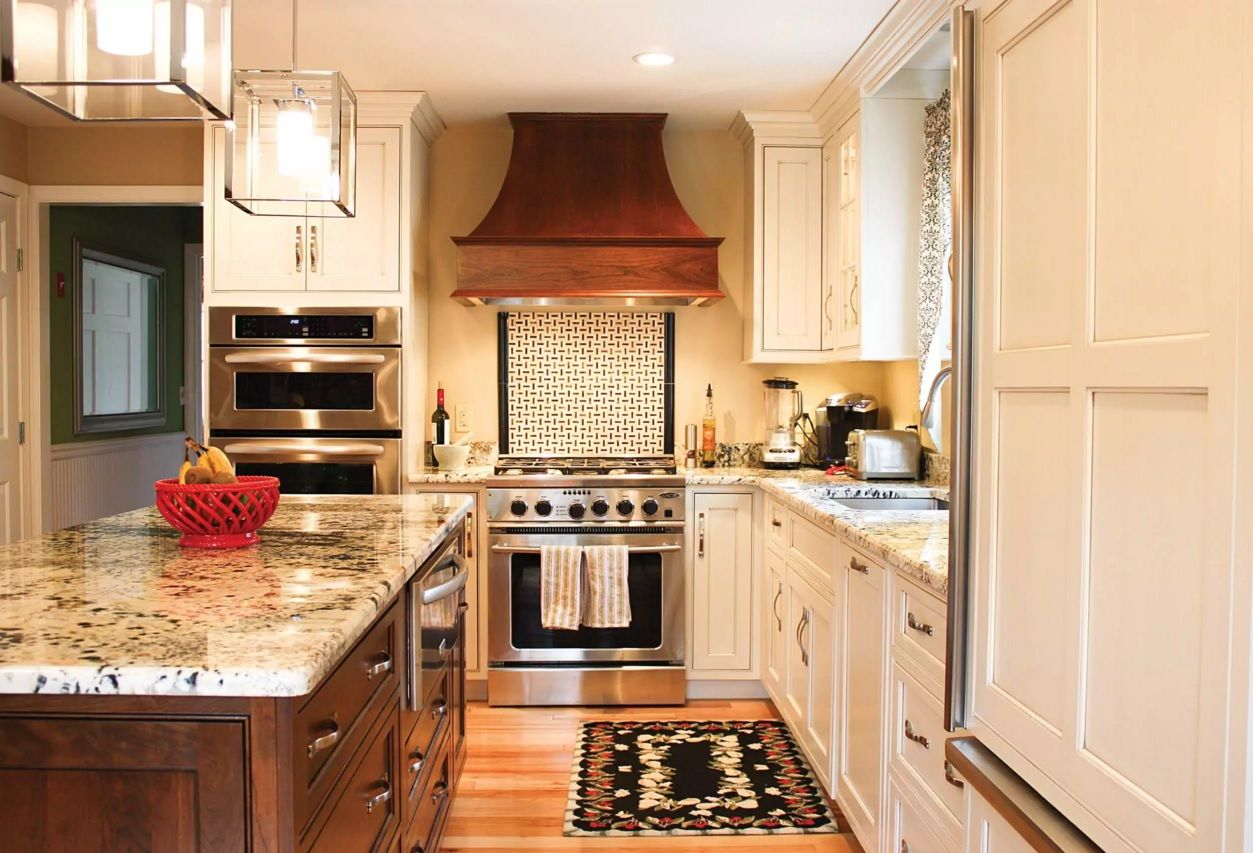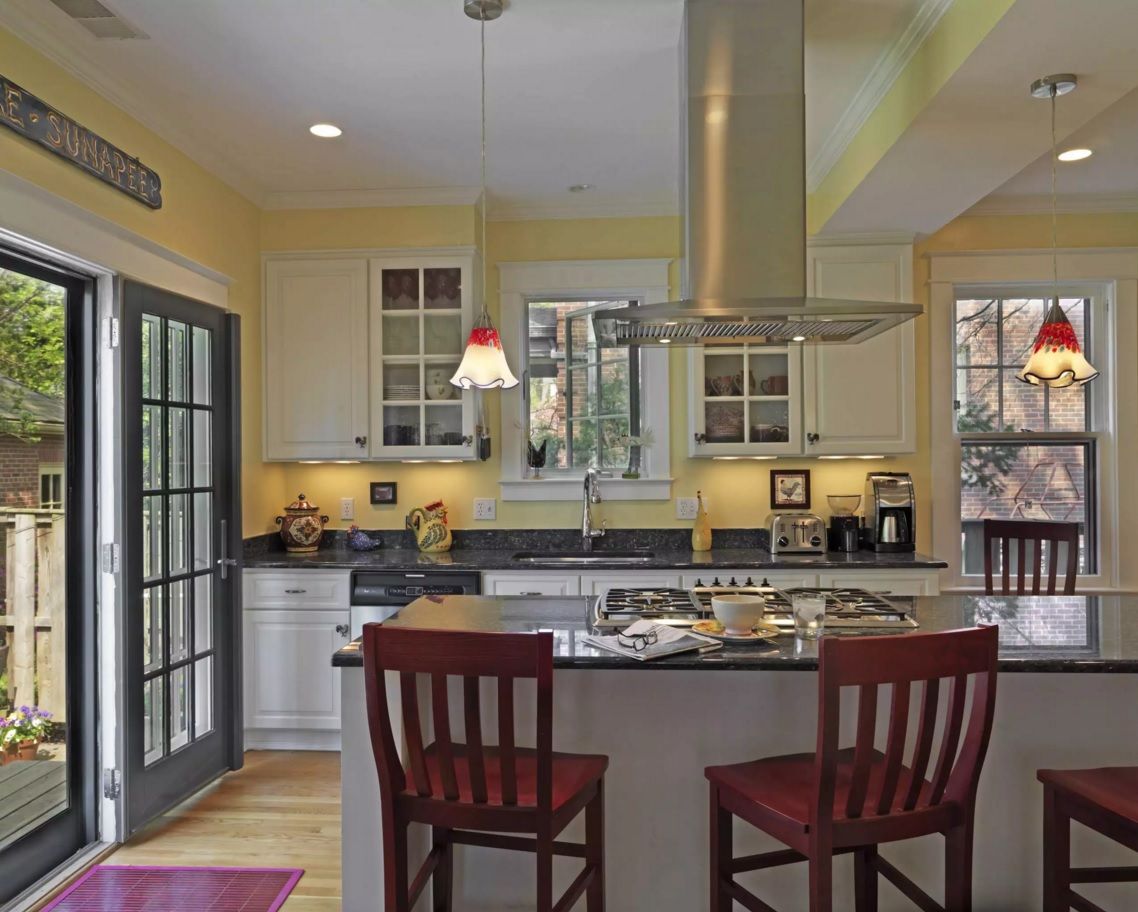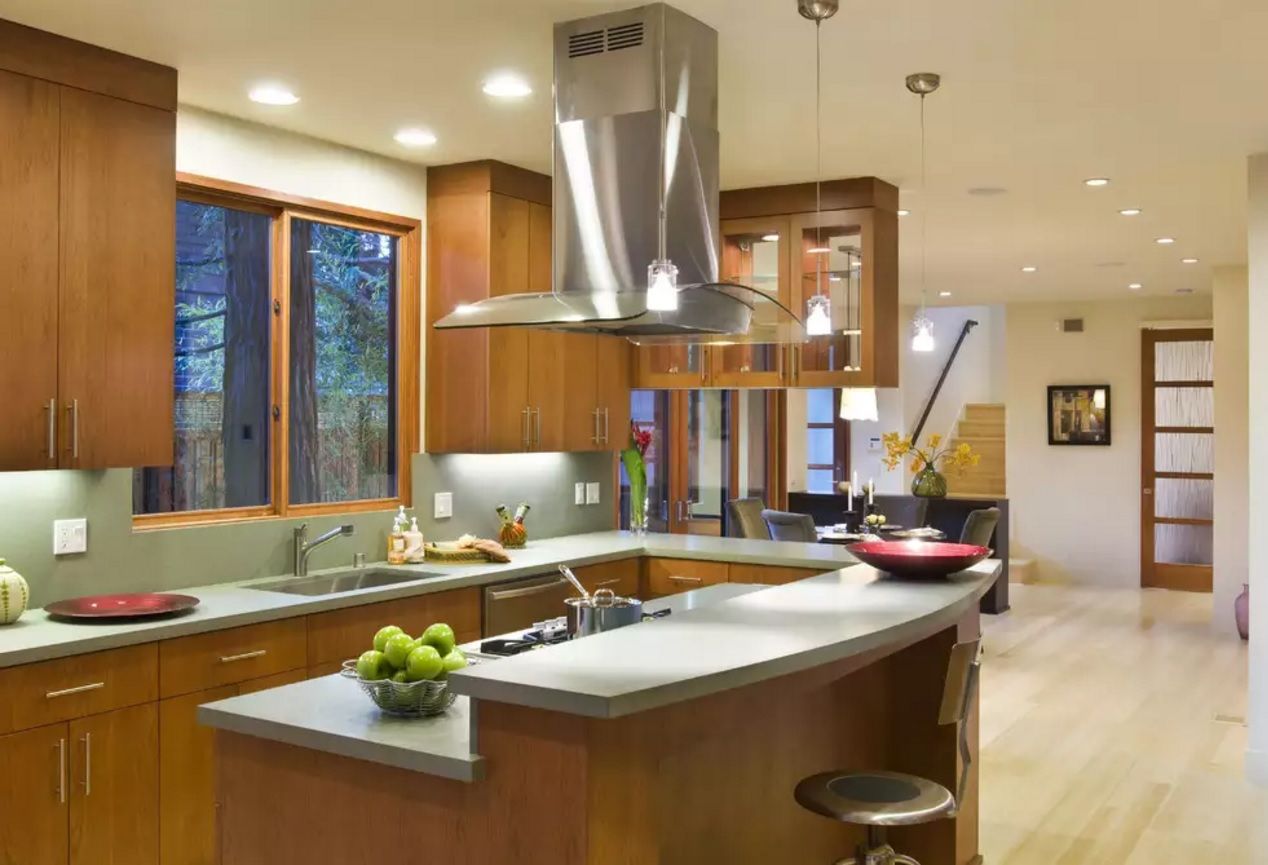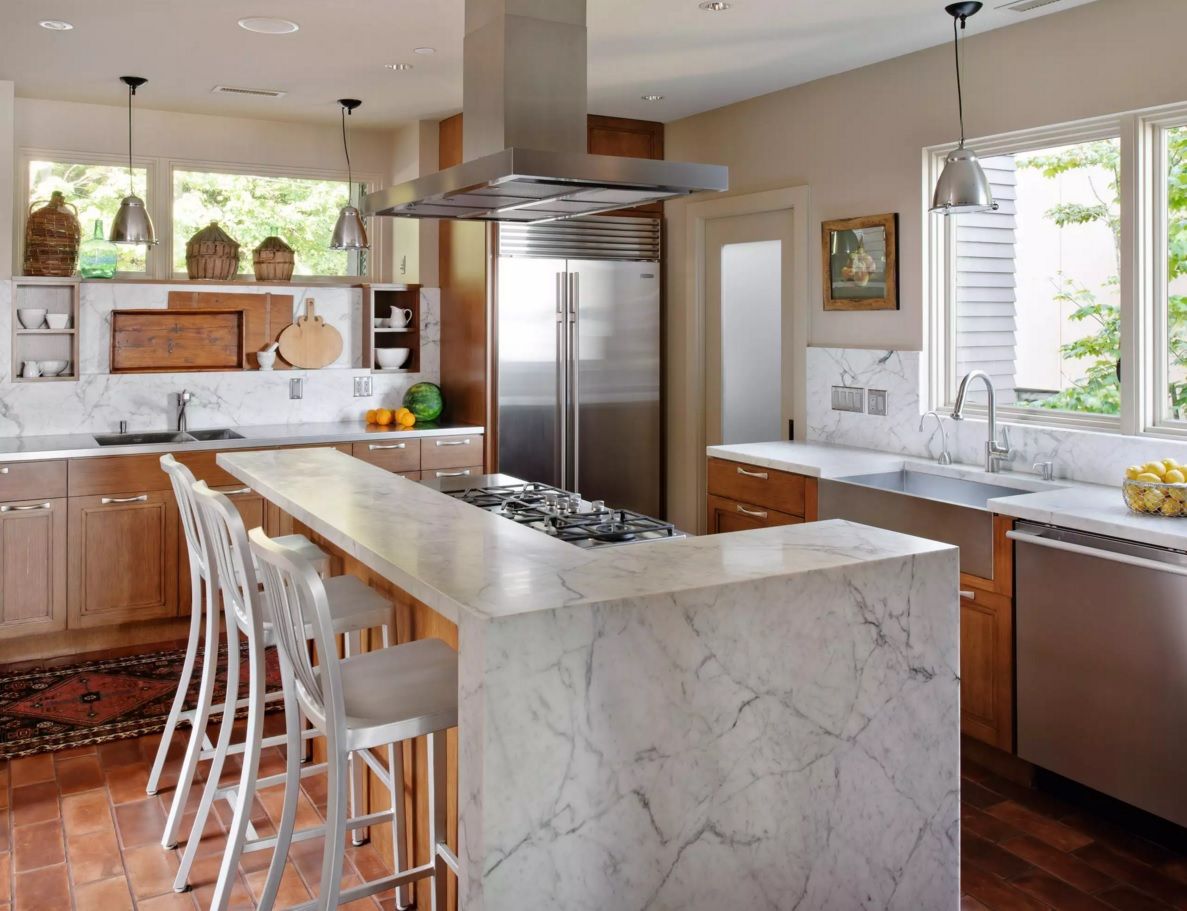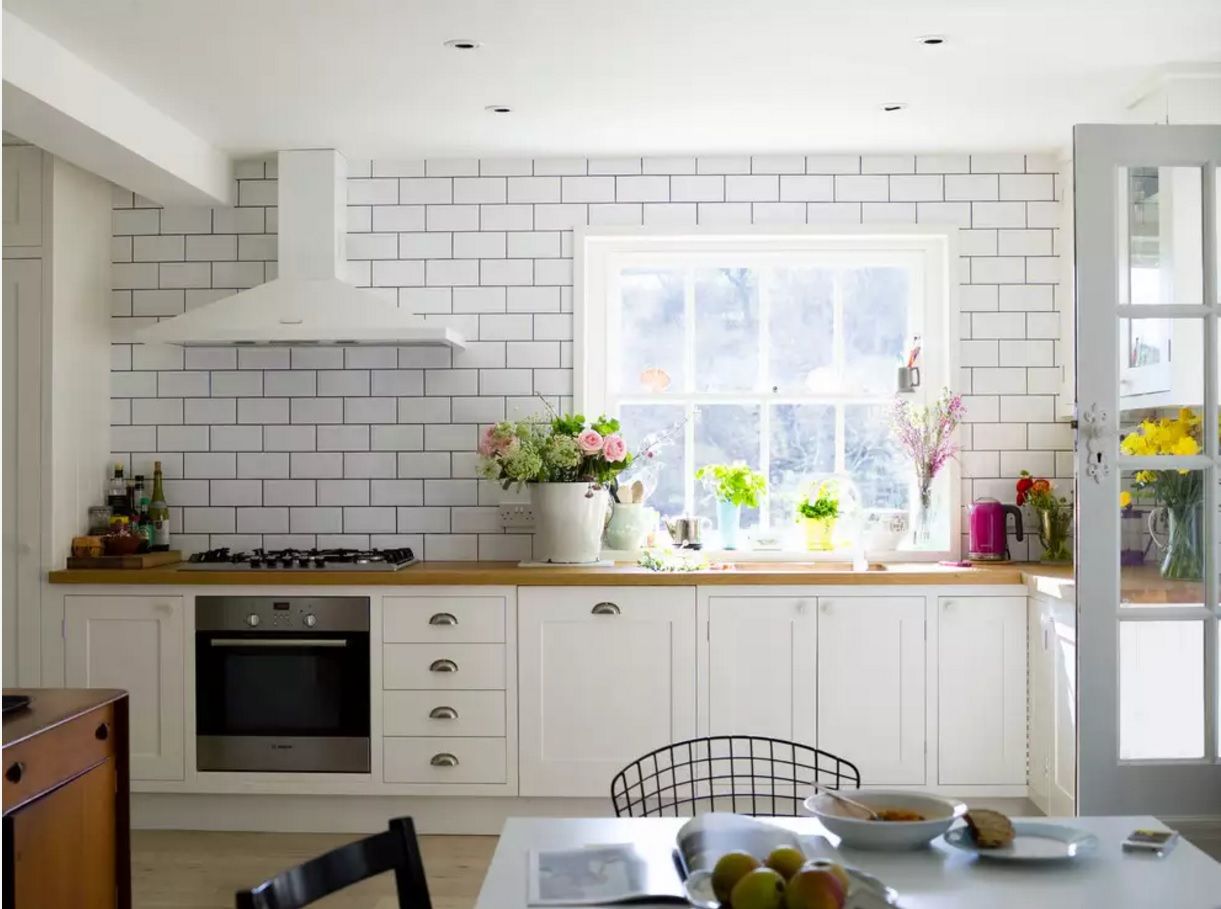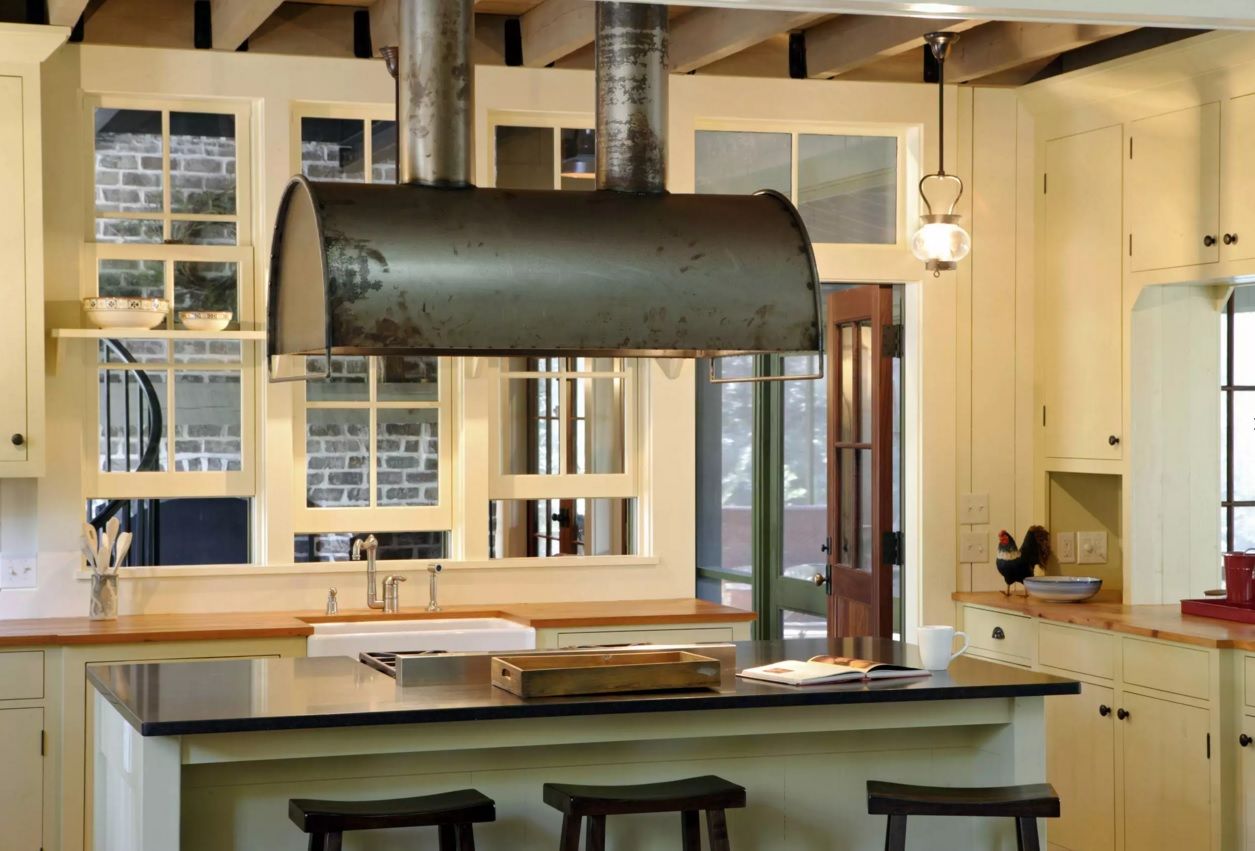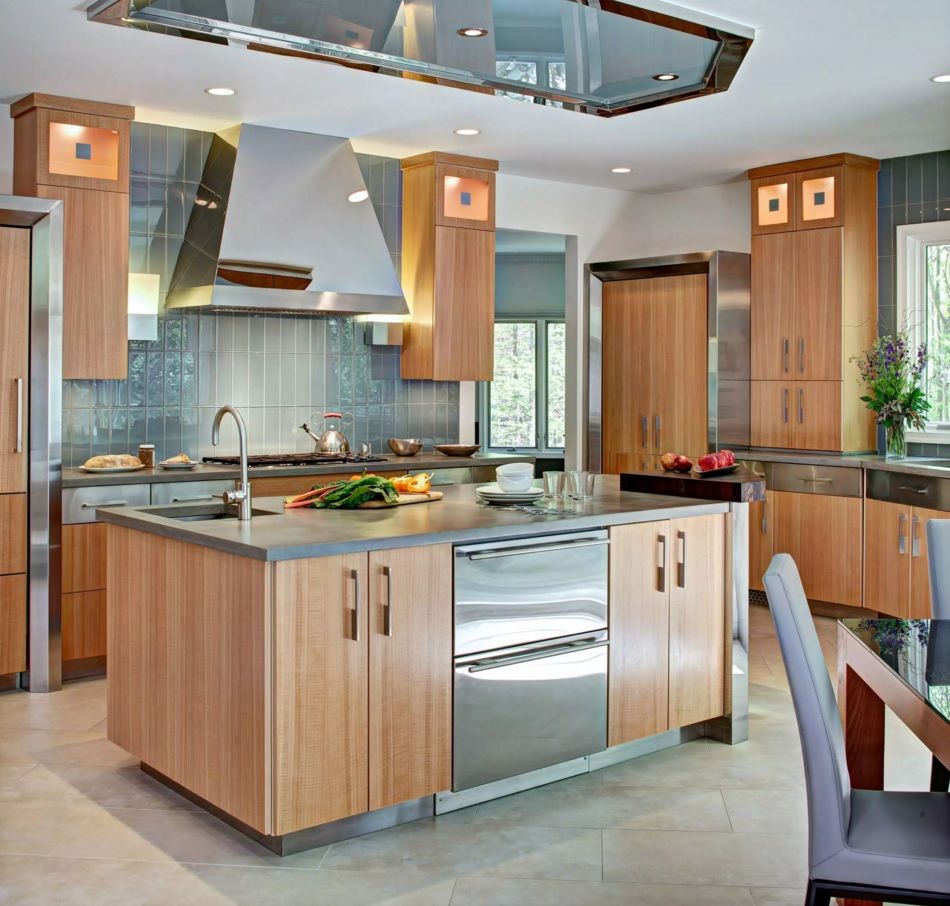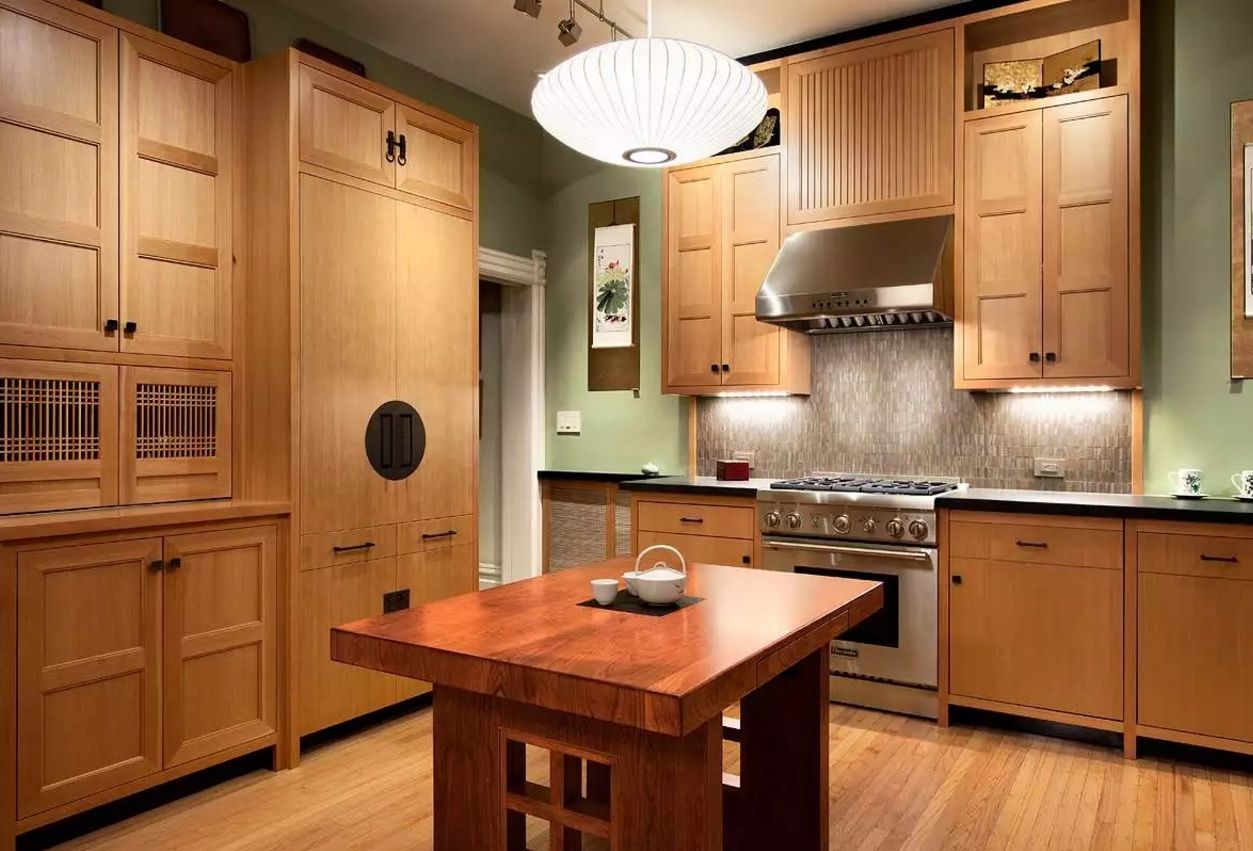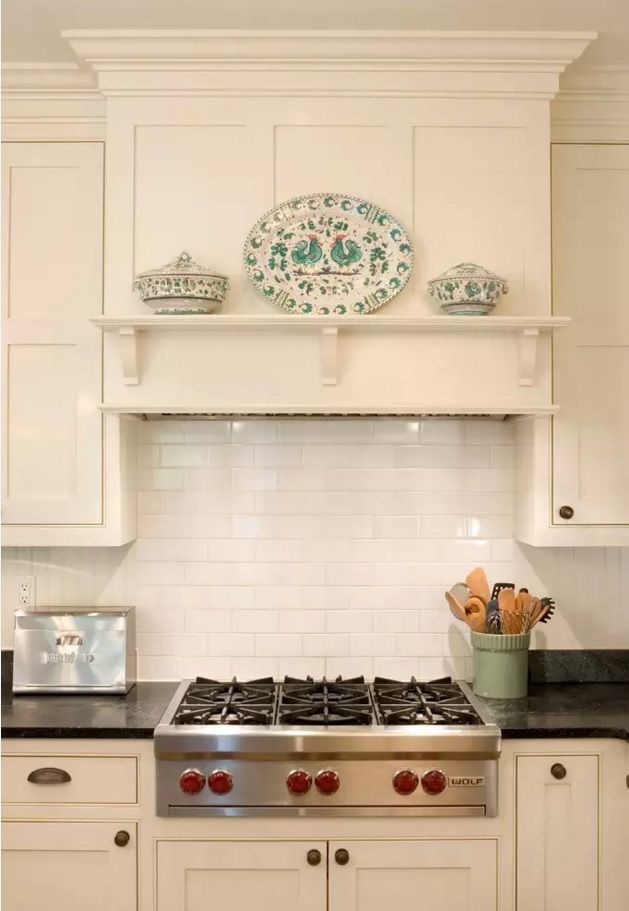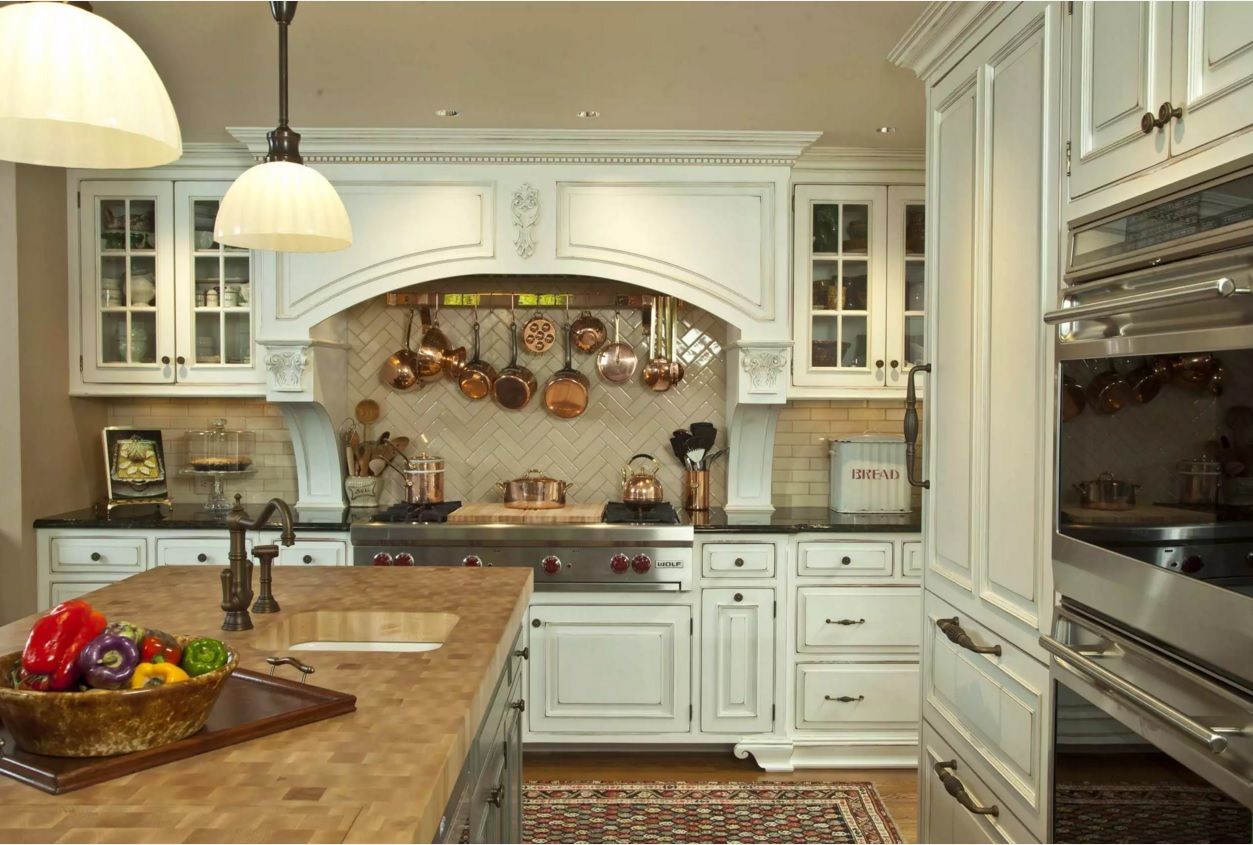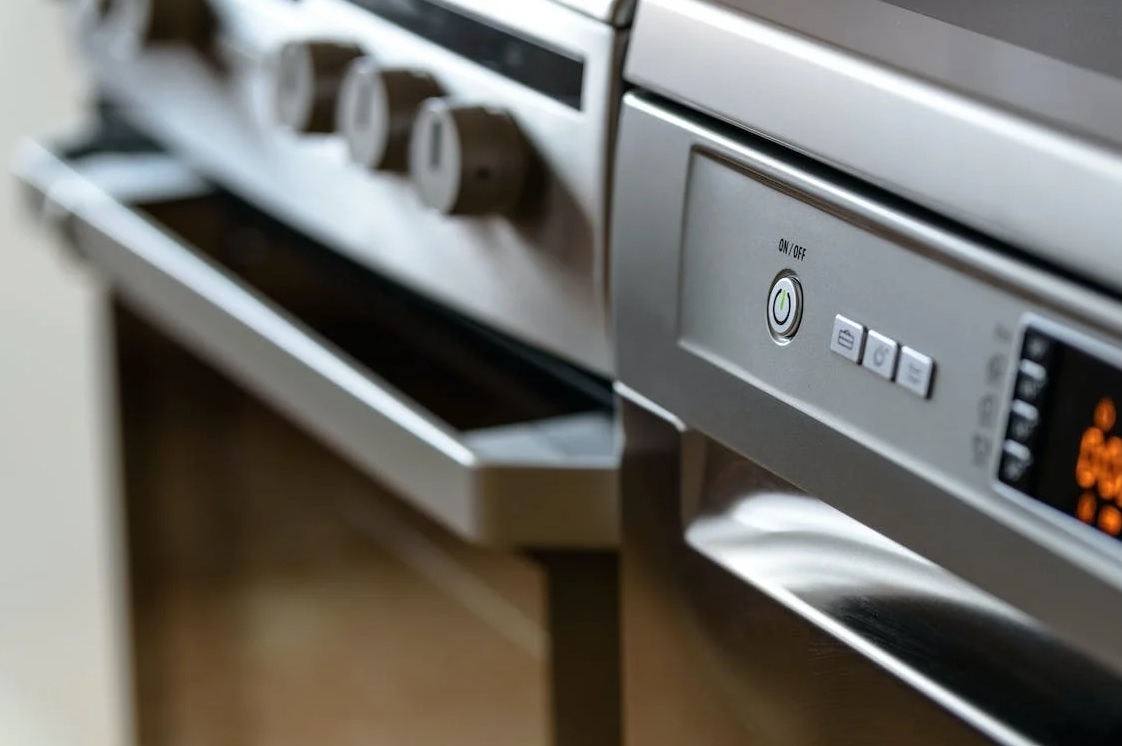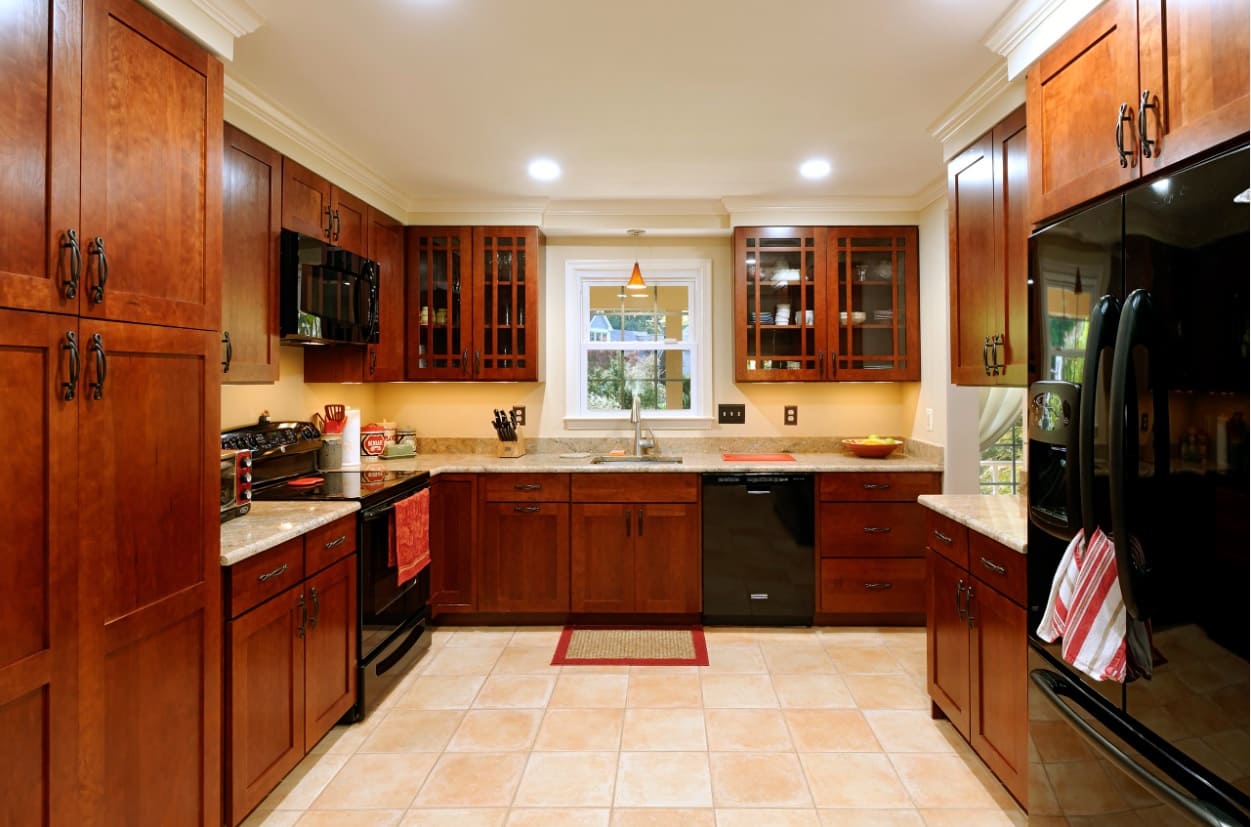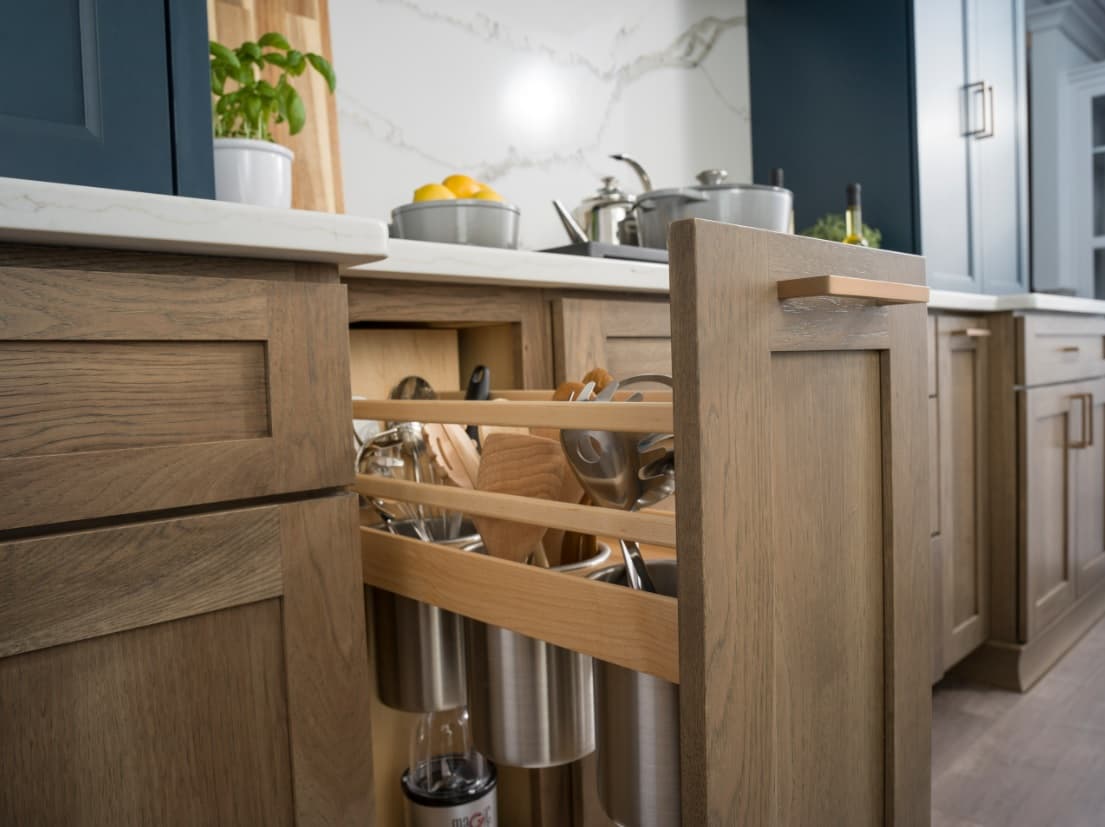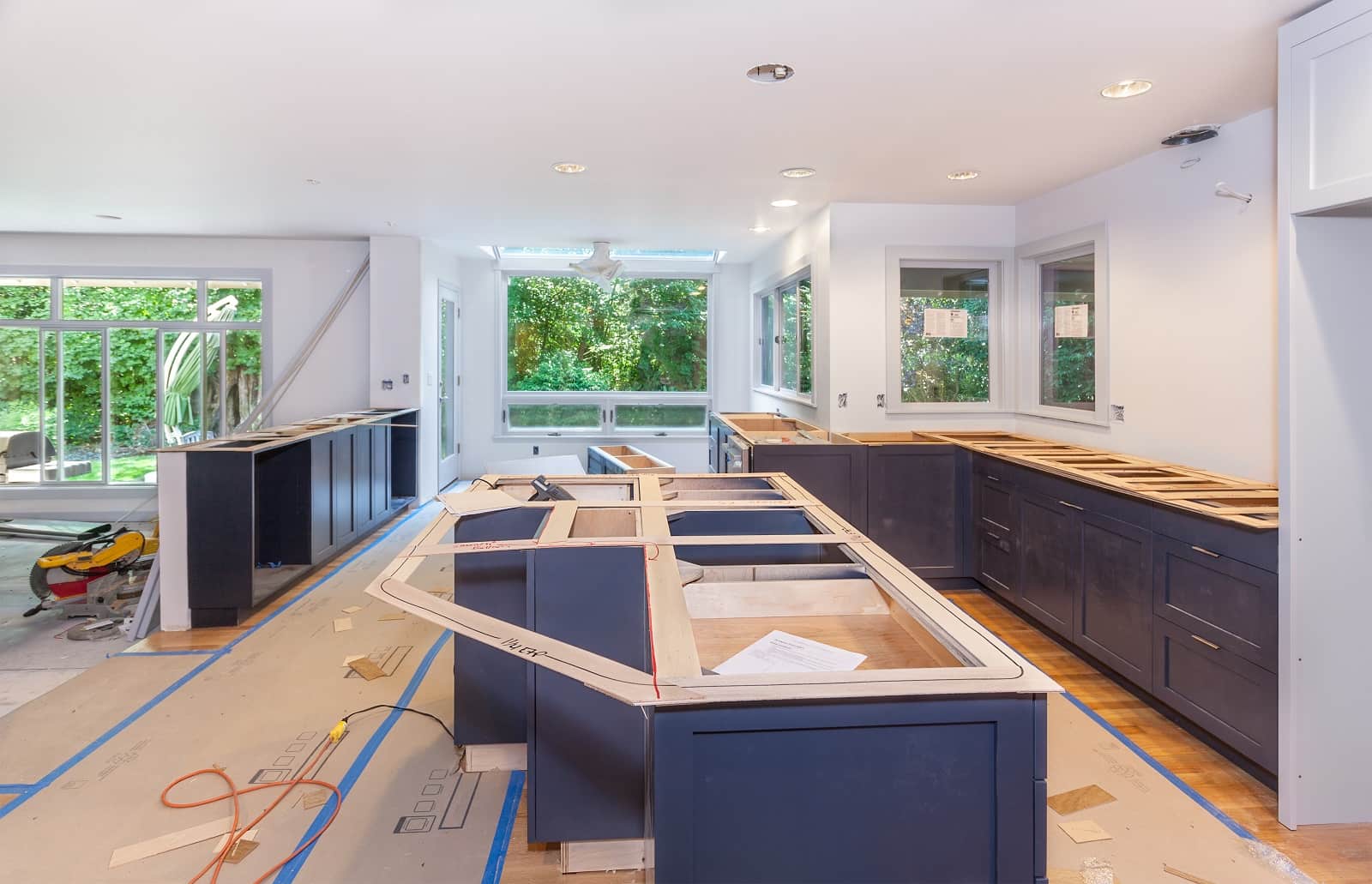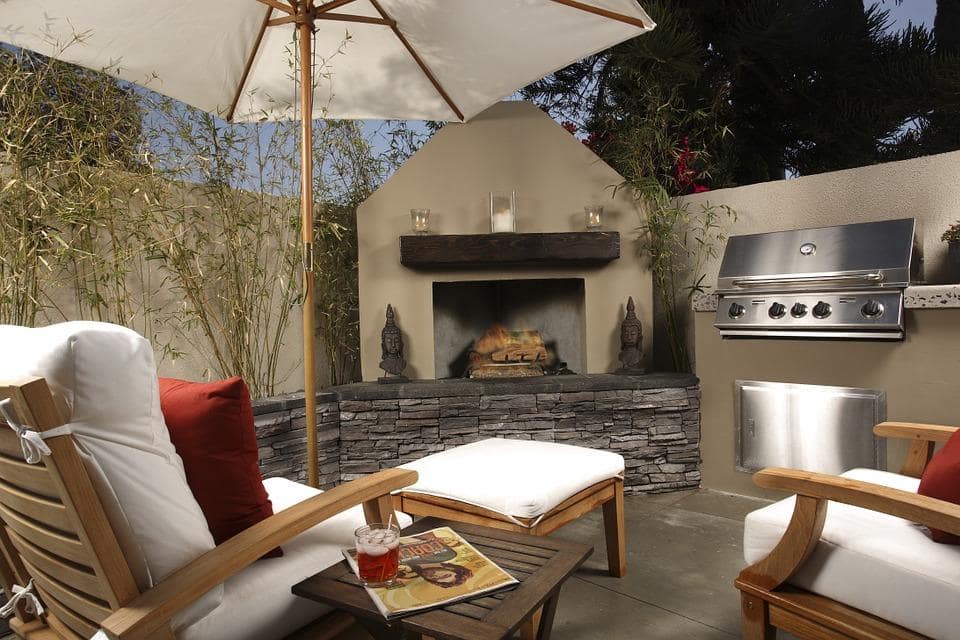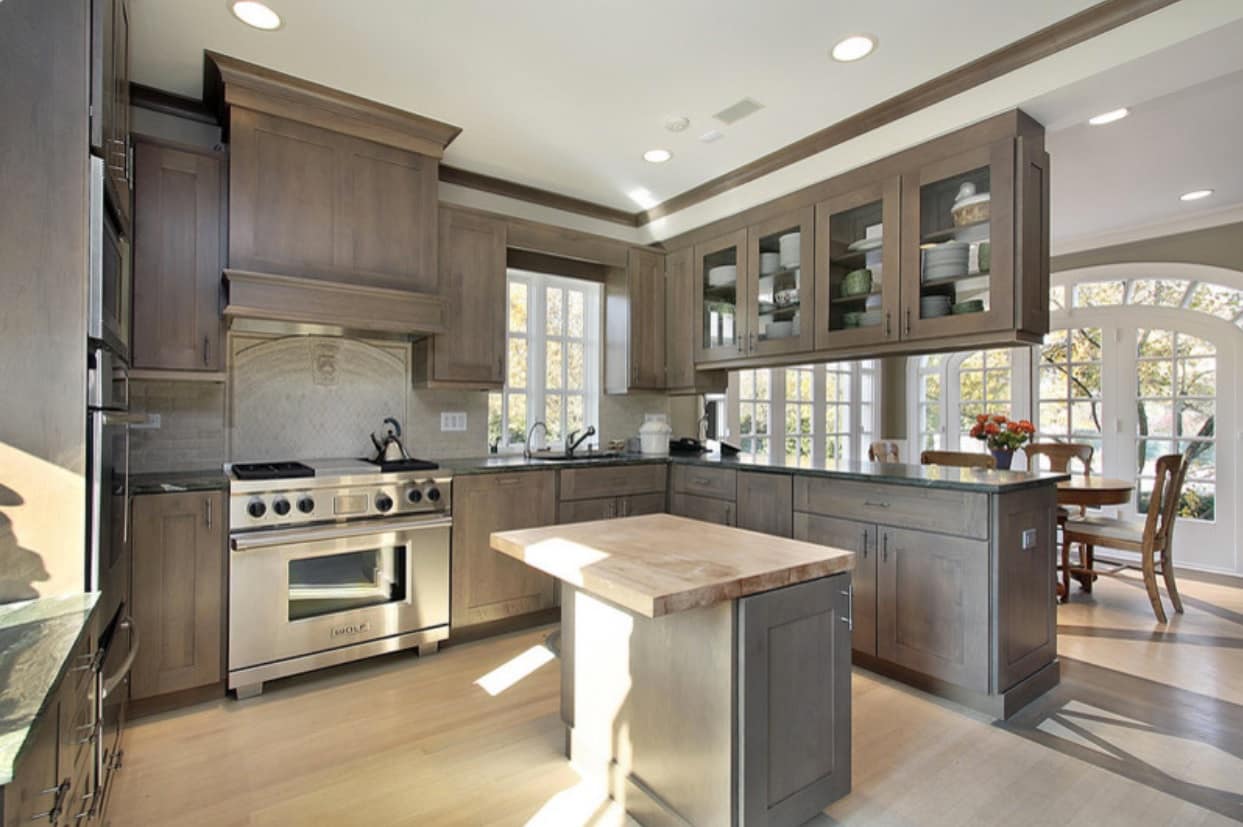Every owner is always seeking to make the home look perfect. The issue becomes topical in regard to the kitchen. After all, a kitchen is the most visited room in the apartment or private house. To make the kitchen comfortable for cooking and having meals, it is necessary to get rid of odors and soot that could remain after cooking. A flat hood for the kitchen can help you to cope with this issue. Сertainly, odors can negatively affect your mood and well-being. Not so many people like to clean every day. A hood protects the furniture from fatty plaque, finishing materials from frequent washing, and the rest of the room from alien smells of the kitchen. Extractor hood becomes a necessary and practical device, as well as an interesting element of kitchen interior design. Let’s take a look at the main types of kitchen hoods.
Contents:
The main types of kitchen hoods. Photo Gallery and Description
- Built-in hoods for the kitchen
- Flat exhaust hoods
- Dome hood for the kitchen
- Island variant of kitchen hoods
- T-cooker hoods
Principles of extractors’ operation
How to choose the kitchen hood
The Main Types of Kitchen Hoods. Photo Gallery and Description
Today, manufacturers of this type of equipment propose a variety of kitchen hood modifications on the market. They differ by the principle of operation, as well as by appearance, but their primary function remains unchanged – cleaning the air. This diversity makes the choice of the required model difficult. In order to stop on the relevant option, you should understand the principles of operation and setting each of them. Also, you should consider the variants which can be the addition of a specific design solution for the kitchen that will comfortably blend into a kitchen set.
Built-in Hoods for the Kitchen
Such type of hood remains the most inconspicuous in the kitchen, as its design allows you to completely hide the construction from prying eyes into one of the cupboards of the kitchen furniture set. In addition to the fact that they fit perfectly into the interior, cooker hoods fulfill their direct function of cleaning the air brilliantly. Recessed (built-in) exhaust hoods differ by their construction. For holders of the cabinet or built-in furniture in the kitchen completely embeddable extractors will suit perfectly. They are mounted in a plane located above the cabinet plate. The working surface of the extractor can only be seen by looking from under the closet. Obviously, it is a convenient option for a small kitchen. Another type is a pull-out option, which is hidden completely. It turns into a full-fledged hood after it is pulled over the cooking surface. Such type of exhausts is convenient because it can become an invisible part of any design. At the same time, telescopic exhaust hood design unfolds, going forward. This device greatly increases the working drawing area. It is more efficient than previous versions.
Flat Exhaust Hoods
This is a fairly concise appearance of the kitchen hood, which is attached directly to the wall or kitchen set. It is convenient because it does not require a connection to the ventilation system, but many models are equipped with an air duct. Air purification is carried out by internal filters that can be disposable (acrylic) and exchangeable (coal). Also, most models are equipped with additional visors for a wider range of work. The pricing policy is the advantage of this type of hood. Moreover, they are a great addition to a kitchen.
Dome Hood for the Kitchen
These constructions are the most common type of cooker hoods. This type differs advantageously from other types of extracts by its functionality, ease of use, as well as a large variety of design solutions. Dome hoods fix on the wall or on the ceiling above the stove. The performance of such extracts is big. Dimensions extracts can be equipped with powerful motors. Hood can operate in several modes, which helps to expend the electrical energy efficiently. Since the size of an extractor is not small, it is more convenient to use it in the spacious kitchen or at the summer cottage. Definitely, the dome hood can be chosen in almost any decor because they have a different shape, color, size. The material for the production of extractors can be divided into three types: different metals (chromium, aluminum, steel), metal with wood or glass, and metal with a wood finish.
Island Variant of Kitchen Hoods
This is an impressive and most vivid embodiment of an air purifier. A convenient and practical it is to be gaining popularity in the island kitchens, where the cooking surface is located in the middle of the room. But this does not mean that the island exhaust hood can’t be installed anywhere else in the kitchen, where the stove is located. It can be installed on the ceiling, and the working part is lowered over the stove. It seems that the extractor is floating in the air. Of course, it is suitable for premises with a large area. It differs from other types of extracts that have only exhaust air mode. Air recirculation is not available in such models. Market pleases us with a huge selection of island hoods, which are made in different styles. This will help to create an interior kitchen, decorated in the same style. You can pick up a square, rectangular, or circular form of island extractor.
T-cooker Hoods
The performance of such products is quite high. Their advantage is the sophisticated design and the ability to be installed in a box and without it. Noteworthy, it is particularly suitable for the “last minute” installation because it does not require the allocation of additional furniture. T-exhausts are equipped with additional functions in addition to basic ones. For example, they may contain the carbon or grease filter. Such extractors are made of high-strength materials. Most often, this is chrome-plated metal, stainless steel, or solid glass. This enables easy care. The direct form of a T-shaped hood allows their use in interiors of different styles. But this option looks greatt for such style as minimalism.
Principles of Extractors’ Operation
According to the principle of operation, there are two types of kitchen hoods: recirculation and flowing. The first type is based on the incoming airflow cleaning using filters and returning it back to the room. One filter traps grease and soot, another absorbs odors. This is one of the least expensive options, but an inefficient one at the same time. More productive are flow hoods. They are drawing soot, steam, cooking odors to the street through the ventilation system of the building. At the same time the street supplies kitchen with fresh air. Flow hoods need constant care. Their effectiveness depends on the width of the inlet. A neat duct placed behind the finished wall or on top of the kitchen cabinets.
How to Choose the Kitchen Hood
Firstly, you need to consider the fact that the effectiveness of any extractor depends on its width when choosing. Ideally, the width of the hood must match the width of the stove, or even better if it is a bit more than her. Otherwise, the hood will not be able to capture a hundred percent evaporation of the cooking surface. Installation height depends on the stove type. The air cleaner should be installed at a height of not less than 70cm for an electric one, and not less than 80cm for a gas oven.
Selecting a Kitchen Extractor
When you select a kitchen extractor you need to pay attention to such an operational parameter as performance. It represents the amount of air, which hood “pumps” per hour. This index may vary from 200m3 / h to 1200m3 / h. The most optimal variant is extractor with a capacity of 250m3 / h and more above. According to the norms of SES air refreshing in the kitchen should be no less than twelve times per hour. The higher performance of the device, the better air cleaning will take place. After all, the conditions in the kitchen are constantly changing: the cooking time, temperature, the presence of smokers, air pollution.
Noise Level
Do not leave such a parameter as noise without attention. The noise level depends on extraction performance. Many manufacturers have found a way out of this situation and, therefore, you can find a modification that would combine good performance and low noise. To reduce the noise of the engine can be carried out insulation, used pads of a special form. Some models are equipped with anti-vibration pads. In addition, the input or output of the hood manufacturers inserts sound-absorbing plates and noise-canceling sleeves. The quality hood should have a noise level of not higher than 50dB.
Most of the modern extractors have built-in lighting. This is a practical option, which allows you to illuminate the work area additionally. The number of lamps and their location can be different, but in most cases, they are located on the distal part of the device.
You can choose the hood, which combines the properties of the air circulating and exhaust modes. Also, when choosing an air cleaner, you should pay attention to the operation control options – push button or sensor. The pricing range will significantly vary depending on this parameter.
Extractor hood is a mandatory element of the kitchen. It looks quite neat and the installation does not require any extra effort. Hood will help to protect the kitchen from outside pollution and will always maintain a pleasant atmosphere in it.



